#Mongolian
Text
Mongolian horse archer; pulled from Instagram from a repost account that did not include the og source
#archery#Mongolian rider#Mongolian#mongolia#horse#equestrian#horseblr#traditional riding#horseback riding#mounted archery
942 notes
·
View notes
Text
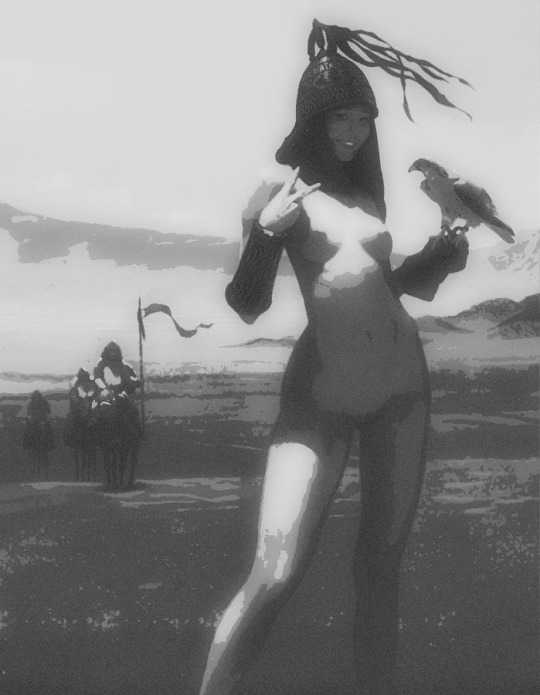
A Mongolian Falconer
205 notes
·
View notes
Text
#poll#polls#languages#language#ukraine#ukrainian#georgia#georgian#turkey#turkish#kurdish#sámi#sami#saami#palestine#iraq#jordan#qatar#arabic#india#hindi#mongolia#mongolian#nepal#nepali#punjabi#vietnam#vietnamese#pakistan#urdu
101 notes
·
View notes
Text

Lovers by the riverbank
(They are both Khalkha Mongolian transmasc/transfem lesbians!)
#my art#lesbian#transfem#transmasc#trans#t4t#butch#femme#butchfemme#transfeminine#transmasculine#transgender#mongolian#khalkha#central asian
242 notes
·
View notes
Text
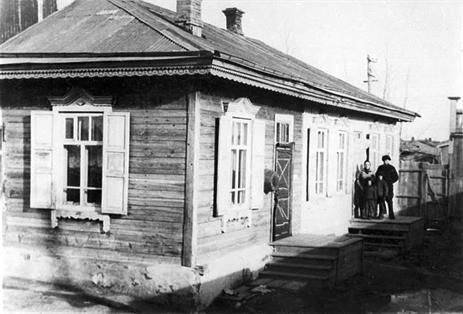
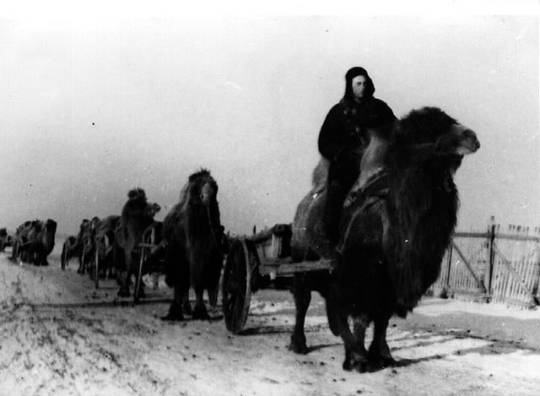
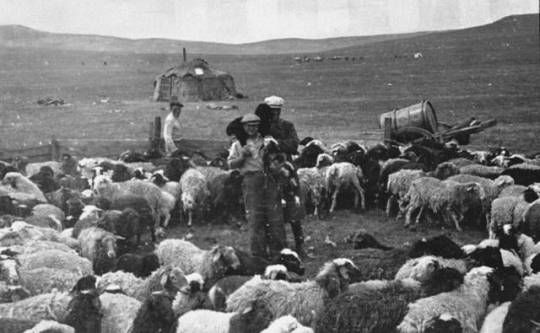


The Litvin family - Jewish farmers from Hailar, Manchuria, Chinese Inner Mongolia region
The Litvin family was originally from Irkutsk, Siberia. Life for Jews became increasingly harder there during WWI, so the family moved to Inner Mongolia where the existence of the Chinese Eastern Railway made the pastoral area promising.
The family patriarch, Simeon Litvin, was a very skilled farmer. He could accurately determine the age of a horse by its teeth and learned to speak the Mongolian and Tungus languages when communicating with Buryat and Tungus people. So when the family settled in the small town of Hailar on the CER, Simeon quickly made himself at home and gained friends among his suppliers, while still observing Jewish holidays, not working on Saturdays and regularly visiting the Hailar synagogue.
The situation changed dramatically when the Japanese occupied Manchuria in the early 1930s and established the puppet state of Manchukuo, after the Soviet Union sold its part of the railroad to the them. Japanese troops and police became increasingly aggressive, attacking, insulting, and even raping private citizens. They ruthlessly beheaded captives without trials and put their heads on public display. Chaim Litvin, the son of Simeon, had to endure brutal torture and years of imprisonment in a labor camp. After the prison was liberated, Chaim hurried home to Harbin, covering 700 kilometers in only three days. There, he began to breed cattle, got married and built a large farm together with his wife. Chaim worked until in 1959, in the People’s Republic of China, everything was confiscated. With the threat of being arrested by the Communist regime, he went with his family to Israel in 1962.
160 notes
·
View notes
Text

#loft#high ceilings#industrial#metal railing#living room#soft and hard#interior design#Mongolian#earthy
95 notes
·
View notes
Text
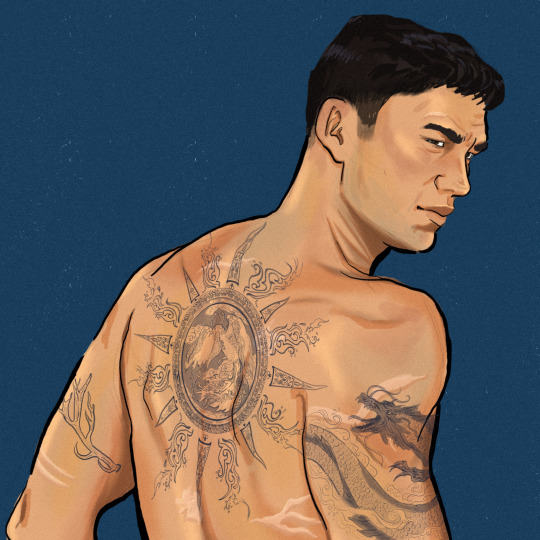

the @gvartistsforpalestine commission said, "mals tattoo and part of his face"
I really enjoyed drawing on motifs from Southeastern Russian (including Slavic motifs and groups like the Shor), Mongolian, Kazakh, and northwestern Chinese art and embroidery for this design. Mal's background (even whether he knows his parents or not) isn't explored in the show, even at times it was deeply weird for it not to come up--like meeting the twins with Alina, or when he and Alina discuss their relationship to the Ravkan regime 🥴🤔. Yet season 1 clearly shows and implies Mal is somehow "other" like Alina, but is more ethnically ambiguous and presumably able to dodge some of the racism she gets. Therefore I made the designs on the theory that he, like Alina, is either half Shu or from a border area where the distinction is inapplicable.
That being said, I think show!Mal being half Suli would be very interesting. It is the analog to Archie Reneaux's background (in the sense that it appears south Asian actors are being cast for the Suli).
#grishaverse#mal oretsev#malina#shadow and bone#shadow and bone fanart#shadow and bone season 2#save shadow and bone#shadow and bone season 3#six of crows spinoff#grishaverse fanart#malina fanart#mal fanart#tattoos#kazakh#russian#mongolian#central asia fantasy inspo#tattoo artist#drawing#illustration#doodles#my doodles#art#my art#procreate
54 notes
·
View notes
Text
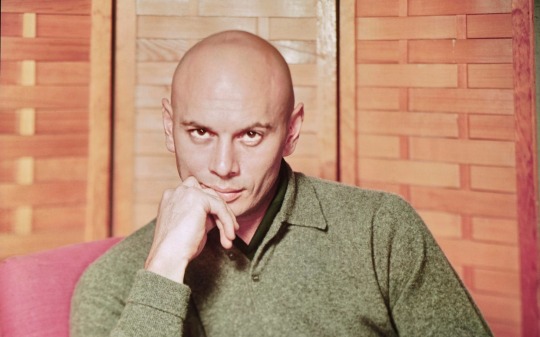
Yul Brynner (deceased)
Gender: Male
Sexuality: Bisexual
DOB: 11 July 1920
RIP: 10 October 1985
Ethnicity: Swiss-German, Russian, Buryat (Mongol), Romani
Nationality: Russian
Occupation: Actor, model, photographer, writer
#Yul Brynner#lgbt history#bisexuality#lgbt#qpoc#male#bisexual#1920#rip#historical#poc#asian#biracial#russian#mongolian#romani#actor#model#photographer#writer
68 notes
·
View notes
Text
Month wrap-up
Korean: 383 words this month, the biggest amount this year! This was my main focus this month. Picks of my favorite words from this month:
교대 交代 - taking turns
당청되다 當籤- - to win the lottery
마땅히 - properly
석화 石花 - oyster
일당백 一當百 - equal to 100 warriors
출하 出荷 - shipment
Japanese: only 57 words this time! I feel like I've studied more though. I've gotten better at listening! Favorite words:
いれい 慰霊 - consoling the dead
しけ 時化 - stormy weather at sea
でんち 電池 - battery
よてい 予定 - plans
Mandarin and Cantonese: I haven't focused on these much this month. However I've been listening to both languages a bunch.
Mongolian: I haven't logged the words I know because I'm learning it with a different approach. But I've been studying it a lot and am learning a bunch of new words!
Toki Pona: I can now understand written text 99% of the time. I should practice writing next.
Okinawan: I've learn the Okinawan version of every Japanese word I've studied this month. I'm progressing steadily.
Other languages: I've been learning random words from other languages too. Notably Hungarian (Which I haven't learned at all in the past). Maybe I should start studying it regularly!

#langblr#language#korean#한국어#日本語#日本語勉強#mongolian#монгол хэл#toki pona#mandarin#cantonese#okinawan#hungarian#うちなーぐち#log#study blog#word list#studyblr
77 notes
·
View notes
Text
Married Mongolian Women’s Hairstyle in the Yuan Dynasty
Mongolians have a long history of shaving and cutting their hair in specific styles to signal socioeconomic, marital, and ethnic status that spans thousands of years. The cutting and shaving of the hair was also regarded as an important symbol of change and transition. No Mongolian tradition exemplifies this better than the first haircut a child receives called Daah Urgeeh, khüükhdiin üs avakh (cutting the child’s hair), or örövlög ürgeekh (clipping the child’s crest) (Mongulai, 2018)
The custom is practiced for boys when they are at age 3 or 5, and for girls at age 2 or 4. This is due to the Mongols’ traditional belief in odd numbers as arga (method) [also known as action, ᠮᠣᠩᠭᠤᠯ, арга] and even numbers as bilig (wisdom) [ᠪᠢᠴᠢᠭ, билиг].
Mongulai, 2018.
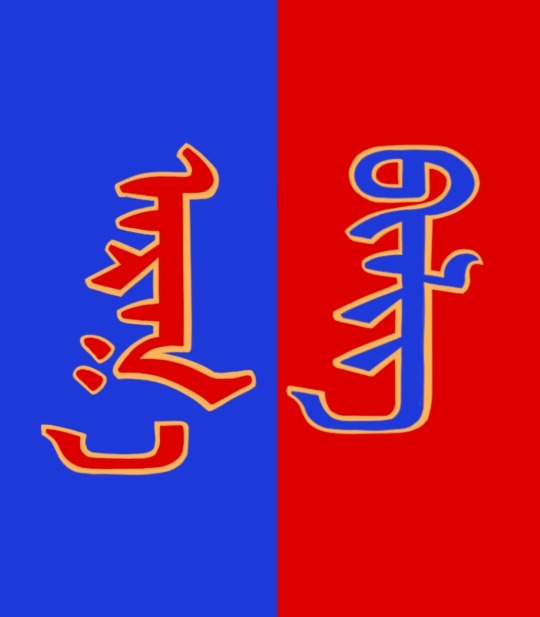
The Mongolian concept of arga bilig (see above) represents the belief that opposite forces, in this case action [external] and wisdom [internal], need to co-exist in stability to achieve harmony. Although one may be tempted to call it the Mongolian version of Yin-Yang, arga bilig is a separate concept altogether with roots found not in Chinese philosophy nor Daoism, but Eurasian shamanism.
However, Mongolian men were not the only ones who shaved their hair. Mongolian women did as well.
Flemish Franciscan missionary and explorer, William of Rubruck [Willem van Ruysbroeck] (1220-1293) was among the earliest Westerners to make detailed records about the Mongol Empire, its court, and people. In one of his accounts he states the following:
But on the day following her marriage, (a woman) shaves the front half of her head, and puts on a tunic as wide as a nun's gown, but everyway larger and longer, open before, and tied on the right side. […] Furthermore, they have a head-dress which they call bocca [boqtaq/gugu hat] made of bark, or such other light material as they can find, and it is big and as much as two hands can span around, and is a cubit and more high, and square like the capital of a column. This bocca they cover with costly silk stuff, and it is hollow inside, and on top of the capital, or the square on it, they put a tuft of quills or light canes also a cubit or more in length. And this tuft they ornament at the top with peacock feathers, and round the edge (of the top) with feathers from the mallard's tail, and also with precious stones. The wealthy ladies wear such an ornament on their heads, and fasten it down tightly with an amess [J: a fur hood], for which there is an opening in the top for that purpose, and inside they stuff their hair, gathering it together on the back of the tops of their heads in a kind of knot, and putting it in the bocca, which they afterwards tie down tightly under the chin.
Ruysbroeck, 1900
TLDR: Mongolian women shaved the front half of their head and covered it with a boqta, the tall Mongolian headdress worn by noblewomen throughout the Mongol empire. Rubruck observed this hairstyle in noblewomen (boqta was reserved only for noblewomen). It’s not clear whether all women, regardless of status, shaved the front of their heads after marriage and whether it was limited to certain ethnic groups.
When I learned about that piece of information, I was simply going to leave it at that but, what actually motivated me to write this post is to show what I believe to be evidence of what Rubruck described. By sheer coincidence, I came across these Yuan Dynasty empress paintings:

Portrait of Empress Dowager Taji Khatun [ᠲᠠᠵᠢ ᠬᠠᠲᠤᠨ, Тажи xатан], also known as Empress Zhaoxian Yuansheng [昭獻元聖皇后] (1262 - 1322) from album of Portraits of Empresses. Artist Unknown. Ink and color on silk, Yuan Dynasty (1260-1368). National Palace Museum in Taipei, Taiwan [image source].

Portrait of Unnamed Imperial Consort from album Portraits of Empresses. Artist Unknown. Ink and color on silk. Yuan Dynasty (1260-1368). National Palace Mueum in Taiper, Taiwan [image source].

Portrait of unnamed wife of Gegeen Khan [ᠭᠡᠭᠡᠨ ᠬᠠᠭᠠᠨ, Гэгээн хаан], also known as Shidibala [ᠰᠢᠳᠡᠪᠠᠯᠠ, 碩德八剌] and Emperor Yingzong of Yuan [英宗皇帝] (1302-1323) from album Portraits of Empresses. Artist Unknown. Ink and color on silk. Yuan Dynasty (1260-1368), early 14th century. National Palace Museum in Taipei, Taiwan [image source].
To me, it’s evident that the hair of those women is shaved at the front. The transparent gauze strip allows us to clearly see their hairstyle. The other Yuan empress portraits have the front part of the head covered, making it impossible to discern which hairstyle they had. I wonder if the transparent gauze was a personal style choice or if it was part of the tradition such that, after shaving the hair, the women had to show that they were now married by showcasing the shaved part.
As shaving or cutting the hair was a practice linked by nomads with transitioning or changing from one state to another (going from being single to married, for example), it would not be a surprise if the women regrew it.
References:
Mongulai. (2018, April 19). Tradition of cutting the hair of the child for the first time.
Ruysbroeck, W. V. & Giovanni, D. P. D. C., Rockhill, W. W., ed. (1900) The journey of William of Rubruck to the eastern parts of the world, 1253-55, as narrated by himself, with two accounts of the earlier journey of John of Pian de Carpine. Hakluyt Society London. Retrieved from the University of Washington’s Silk Road texts.
#mongolia#mongolian#yuan dynasty#mongolian history#chinese history#china#boqta#mongolian traditions#history#gegeen khan#empress dowager taji#mongol empire#William of Rubruck#historical fashion#arga bilig#central asia#central asian culture#mongolian culture#asia
273 notes
·
View notes
Video
youtube
(via The HU - Wolf Totem (Official Music Video)
The HU is a Mongolian folk metal band formed in 2016. Incorporating traditional Mongolian instrumentation, including the morin khuur, the tovshuur, and throat singing, the band calls their style of music "hunnu rock", a term inspired by the Xiongnu, an ancient tribal confederation of uncertain origins, known as Hünnü in Mongolia. Some of the band's lyrics include old Mongolian war cries and poetry.
62 notes
·
View notes
Text
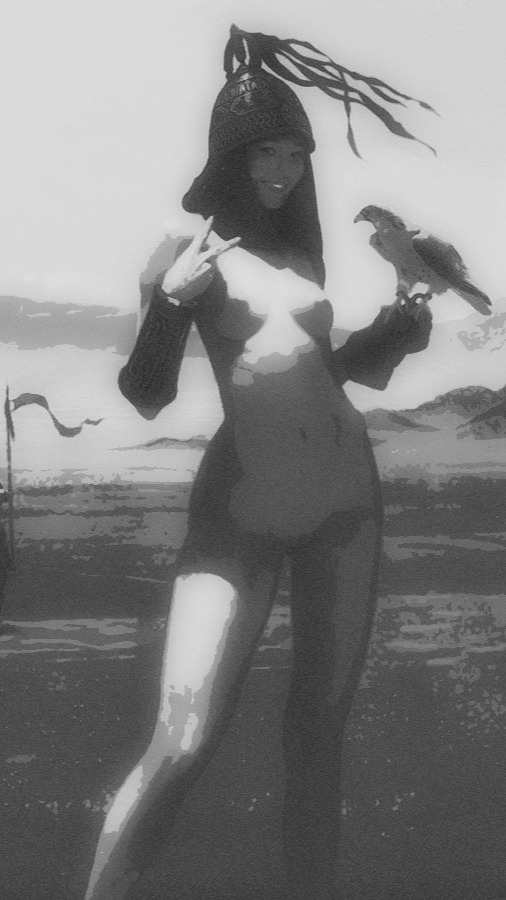
The Mongolian Falconer
396 notes
·
View notes
Text
Non-English songs that I listen to
To celebrate 4,000 followers (😯, thank you so much!!), I have decided to post a list of non-English songs that I listen to. Most of them are in my target languages, but I like some songs of which I don't understand a word 😅
Albanian
Lejla by Elvana Gjata ft. Capital T and 2PO2
Arabic
السيّدة النّصر/Doña Victoria by Raja Meziane
مية و خمسين (Miyye W Khamsin) by Nancy Ajram
يا حبيبي (Ya Habibi) by Mohamed Ramadan & Gims
Armenian
Յարխուշտա (Yarkhushta) by Sevak Amroyan
Catalan
30 dies sense cap accident by Els Amics de les Arts
Ara, aquí, present by Blaumut
Heroïnes de la fosca nit by el Diluvi
Història d’Espanya (explicada pels espanyols) by Brams
Huracà by Sense Sal amb Txarango
Jennifer by Els Catarres
Semblava que fossis tu by Els Amics de les Arts
Sóc d’un país by Brams
Telepàtic by Minova
Tornarem by Lax’n’busto
Un secret que t’havia de dir by Brams
Franco-Provençal
La Tita Eun Vacanse by Le Digourdì
French
Alien by Louane Emera
Alors on danse by Stromae
C’est la vie by Khaled
Chez nous by Patrick Fiori
Dès que le vent soufflera by Renaud
En chantant by Louane Emera
Je te déteste by Vianney
Je vais t’aimer by Louane Emera
Je veux by ZAZ
Je vole by Louane Emera
Jour 1 by Louane Emera
La Marseillaise (It’s the French hymn, but I love it 😂)
La vie est belle by Indochine
Maman by Louane Emera
Papaoutai by Stromae
Sur ma route by Black M
Tous les mêmes by Stromae
Tu vas me manquer by Maître Gims
Vois sur ton chemin by Les Choristes
Galician
Terra by Tanxugueiras
Gaulish
Epona by Eluveitie
German
99 Luftballons by NENA
194 Länder by Mark Forster
Atemlos durch die Nacht by Helene Fischer
Auf uns by Andreas Bourani
Copacabana by IZAL
Die Liebe lässt mich nicht by Silbermond
Drei Uhr Nachts by Mark Forster, LEA
Feuerwerk by Wincent Weiss
Geboren um zu leben by Unheilig
Ich lass für dich das Licht an by Revolverheld
Irgendwie, irgendwo, irgendwie by NENA
Ist da jemand by Adel Tawil
Je ne parle pas français by Namika
Legenden by Max Giesinger
Leichtes Gepack by Silbermond
Nur ein Herzschlag entfernt by Wincent Weiss
Nur für dich by Wise Guys
Sag mir was du willst by Clueso
Schon okay by JEREMIAS
Traum by CRO
Übermorgen by Mark Forster
Wer kann da denn schon nein sagen by Feuerherz
Wir sind frei by Berge
Greek
Όνειρό μου (Oniro mou) by Γιάννα Τερζή (Yianna Terzi)
Irish
D’Aon Ghuth Amháin by Seo Linn
Italian
Non mi avete fatto niente by Ermal Meta, Fabrizio Moro
Non è vero by The Kolors
Latin
City of the Dead by Eurielle
Mandarin
作勢裝腔 by 張韶涵 Angela Zhang
倒數 by 鄧紫棋 G.E.M.
天亮以前說再見 by 曲肖冰
我的歌聲裡 by 曲婉婷
是他不配 by 孫盛希 Shi Shi
淒美地 by 郭頂 Guo Ding
蓋亞 by 林憶蓮 Sandy Lam
裝醉 by 張惠妹 aMEI
諷刺的情書 by 田馥甄 Hebe Tien
陽光宅男 by 周杰倫 Jay Chou
Mongolian
Yuve Yuve Yu by The HU
Russian
Бадола by Альбина и Фати Царикаевы
Жить by DJ SMASH, Полина Гагарина & Егор Крид
Ищи не ищи by Ирина Круг
Когда рядом ты by Винтаж
Май by Клава Кока
На Титанике by Лолита
Не любовь by Ханна
Не пара by Потап и Настя
Небеса Европы by Александр Рыбак
Прованс by Ёлка
Прогулка by Земфира
Я свободен by Кипелов
Rusyn
Štefan by Hrdza
Slovene
Hvala, ne! by Lea Sirk
Spanish
20 de enero by La Oreja de Van Gogh
Abrázame by La Oreja de Van Gogh
Adiós by La Oreja de Van Gogh
Como un par de girasoles by La Oreja de Van Gogh
Cuéntame al oído by La Oreja de Van Gogh
Cuídate by La Oreja de Van Gogh
Deseos de cosas imposibles by La Oreja de Van Gogh
Dices by Selena Gomez
Dulce locura by La Oreja de Van Gogh
El 28 by La Oreja de Van Gogh
El mismo sol by Álvaro Soler
El universo sobre mí by Amaral
El último vals by La Oreja de Van Gogh
Él no soy yo by Blas Cantó
Geografía by La Oreja de Van Gogh
Hacia lo salvaje by Amaral
Inmortal by La Oreja de Van Gogh
Jueves by La Oreja de Van Gogh
La esperanza debida by La Oreja de Van Gogh
La playa by La Oreja de Van Gogh
Llévame muy lejos by Amaral
Marta, Guille, Sebas y los demás by Amaral
Más by Selena Gomez
Mon amour by La Oreja de Van Gogh
Moriría por vos by Amaral
París by La Oreja de Van Gogh
Pop by La Oreja de Van Gogh
Puedes contar conmigo by La Oreja de Van Gogh
Rosas by La Oreja de Van Gogh
Sirenas by La Oreja de Van Gogh
Soledad by La Oreja de Van Gogh
Te necesito by Amaral
Un año sin ver llover by Selena Gomez
Un mundo mejor by La Oreja de Van Gogh
Vestido azul by La Oreja de Van Gogh
#langblr#albanian#arabic#armenian#catalan#franco-provençal#french#german#greek#irish#italian#latin#mandarin#mongolian#russian#rusyn#slovene#spanish
216 notes
·
View notes
Text
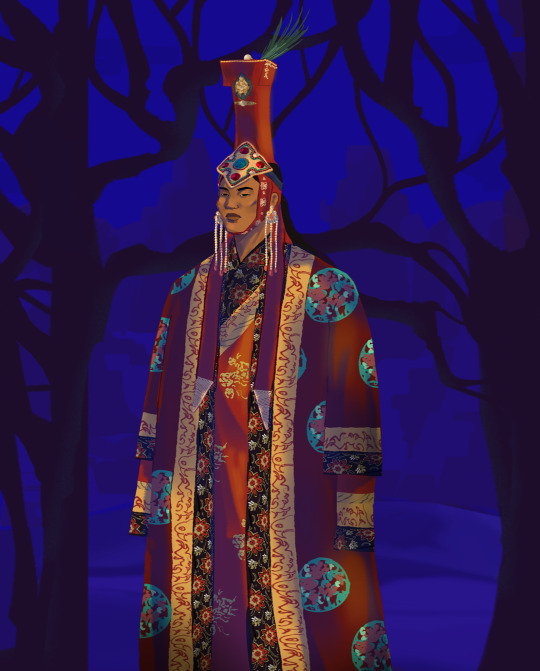
a warning
#her name is batkhuyag#shes not actually a khatun but is in disguise 😶#lesbian#trans#nonbinary#world beyond gods#mongolian#mongol#central asian#my art
43 notes
·
View notes
Photo
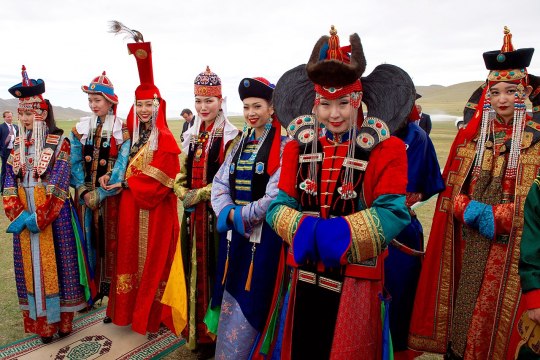
#deel#дээл#дэгэл#蒙古族#ᠮᠣᠩᠭᠣᠯᠴᠤᠳ#Mongolia#Inner Mongolia#Mongol#mongols#mongolian#mongolian people#Mongolian Folk#mongolian fashion#mongolian costume#mongolian culture#mongolian outfit#mongolian attire#East Asia#woman fashion#asia#asian#asian folk costume#Asian fashion#Asian Folk#asian costume#asian culture#asian outfit#asian attire
632 notes
·
View notes
Text

Mongolian falconer
91 notes
·
View notes